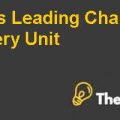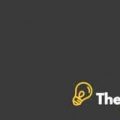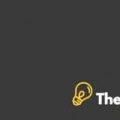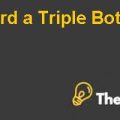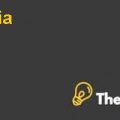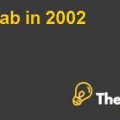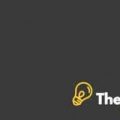Coffee Wars in India: Café Coffee Day Takes on the Global Brands
1. PROBLEM STATEMENT
Café Coffee day is facing competition from Starbucks in the Indian coffee chain market. Café Coffee day’s management is now pondering over whether the large Indian coffee market has room for both Starbucks and Café Coffee day or not. Moreover, Café Coffee day needs to respond to the multinational competition more assertively.
2. EXTERNAL ANALYSIS
a. Opportunities and Threats
- OPPORTUNITIES
- Remarkable growth in coffee consumption with a growth rate (CAGR) of 6.8%.
- Growth in foodservice volume of fresh coffee by 40%.
- Indian cafes becoming hotspot for socialization.
- Local coffee chain earning 35% of their revenues from food versus 15% in the U.S.
- Café market is expected to increase from $230 million in 2010 to $410 million in 2017.
- Cafés hold the lion’s share for socializing.
- Foreign brands in India now focus on 5%-7% market.
- Indians are price sensitive.
- THREATS
- Coffee retailed primarily through supermarkets and hypermarkets was capturing 20% gross sales.
- Increase in specialty coffee shops across India.
- Focus on promotional activities instead of mass media marketing.
- Attrition at store-level.
- Employees are paid twice as low as compared to other coffee chains.
- Keeping stores busy throughout the day was a gross operational challenge.
- Starbucks partnership with Tata.
- Store expansion with un-met customer service levels.
b. Industry competition: PORTER FIVE FORCES
- Bargaining Power of Suppliers (Low)
- The industry is subject to backward integration.
- There is absence of cartelization in this industry.
- Limited number of certified suppliers.
- Bargaining Power of Buyers (High)
- Buyer switching cost is low.
- There is high buyer concentration versus firm concentration.
- There is high backward integration.
- Homogeneity in products is being offered.
- Threat of Substitutes (High)
- The first priority in beverages is given to tea culturally that has a CAGR of 3.6%.
- Other substitutes include soft drinks, juices and smoothies.
- Retailed coffee is another substitute, which has captured 20% coffee sales.
- Specialist coffee chains producing their much owned blended coffee.
- Threat of New Entrants (Medium)
- Already existing local firms have absolute cost advantages.
- The advantage of strategic location to already existing firms.
- The market is overcrowded.
- There is a price sensitive product range.
- Rivalry amongst Existing Firms (Medium)
- Switching cost is low in this industry.
- Quality of the product matters.
- Customer service and other features offered help one to differentiate itself in the industry.
c. Competitor analysis
The competitor analysis shows that Café Coffee Day is subject to the challenge of meeting consumer expectation of high restaurant level customer service. Though market forces are in favor of Café Coffee Day yet it needs to alter its product offering every quarter to meet the changing trends. As it is priced below the competitors and its target market is youth; therefore, Café Coffee Day is in a very strong position in the Indian coffee market. However, Starbucks venture with the Tata Group has given Café Coffee Day a head to head competition. Moreover, the outlet expansion has increased demand for more quality and superior customer service which the Café Coffee Day is unable to meet.
3. INTERNAL ANALYSIS
a. VRIO Analysis
- The internal resources of Café Coffee Day have been efficiently managed by the company.
- It has successfully launched the café culture in the Indian coffee market.
- The internal resource of the company is its cost differentiation that is best for its target market.
- Along with its effectively implemented cost structure, it has a fully backward integrated model with no franchises and no middleman to support the business.
- Every location, from squares to lounges to cafés is company owned. This has helped the company to grow at a good pace.
- With competitive positioning, the company Café Coffee Day holds the 60% major chunk of the market share.
- The internal capabilities of Café Coffee Day have been the low priced and high quality production of the company.
- Café coffee day has maintained a low cost structure right from the start of its operations.
- In addition to this, their strategic location is also one of its key resources, given the high and challenging real estate prices in the Indian economy.....................
This is just a sample partial case solution. Please place the order on the website to order your own originally done case solution.

